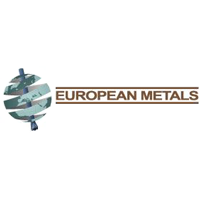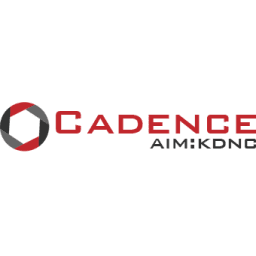European Metals Holdings Ltd (LON:EMH) Managing Director Keith Coughlan caught up with DirectorsTalk to discuss their current pre-feasibility study on the Cinovec Lithium-Tin project
Q1: An update out today for European Metals Holdings, what does the update mean from the point of view of the progress of the project?
A1: Well I believe it means that everything is just heading along nicely Giles, everything’s on track, we’re moving along, we’ve now 3 rigs drilling away and all of the various parts of the study are falling into place nicely.
Q2: Now you’ve said that you’ve got the 3 drill rigs operating, when will we see results from that?
A2: It usually takes about a month after the completion of each hole before we have the results in such a way that we can release them to the market. 2 holes have now been completed over the course of the last few days so about a month from now and we’ll start to be reporting those drill results but they’ll be coming through fairly regular on a fairly regular basis from now until at least September so they’ll be plenty of news flow, plenty of information coming through from those drill results, the assays and what that means for the deposit. As we’ve said the primary reason for this current drilling programme is to bring as much of the inferred resource into the indicated category as possible to increase the confidence of that particularly for the preliminary feasibility study and it’s important that we get as much of that into the indicated category as possible, as quickly as possible.
Q3: Now you talk about something called ‘improved economics’, can you tell us a bit more about that?
A3: Sure, no problem. So the last study that European Metals Holdings released to the market was the scoping study that was finished about 15-16 months ago now and it was fairly preliminary, it was only a scoping study stage, there were a number of assumptions there that we’ve gone back and retested and looked to optimise things like the initial area of accessing the ore body, things like plant location, mining methods, throughput, processing, all these sorts of things. As we’re narrowing down these parameters, looking at the more closely, we’re getting new and better results that we believe will have quite a strong impact on a number of the key financial parameters of the project such as things like capex, the IRR, that sort of thing and we hope to be able to release new data in these categories within the next couple of months to the market. We’ll be able to update the market as to what those numbers are but at this stage we’re certainly getting indication that they will be improved and in some cases significantly improved.
Q4: What do you see for the lithium market for the next 5 years?
A4: Well, the lithium market to me just keeps going from strength to strength. I read from time to time various bit and pieces in the press about stocks and some lithium stocks running too hard and is it a bit of a bubble and what have you, we’ve looked at the fundamentals of the lithium market, the demand and supply of lithium chemicals going forward, in fact out 10 years, we’re very very comfortable that that demand is set to increase. When you look at the demand, or the projected demand, and compare it with the projects that are out there that are known and when those projects are likely to come on and for what sort of levels of production they’re likely to come on for, we see an increase in the demand over supply, 10 years out and we see strong prices for carbonate and hydroxide for that period of time. That is also backed up by all the research and all the industry people that we’ve spoken to or that we’ve read their forecasts, people talking about long term forecasts of lithium carbonate in the $8,000-$9,000 a tonne area and for hydroxide a little bit higher than that again and they’re great numbers. I know that there’s reports of numbers out of China of small scale sales of lithium carbon in excess of $20,000 or even $25,000 and those are exciting numbers but I don’t think anyone in the industry believes that those are numbers you should be using in your forecasts and they’re certainly not numbers for long term high volumes offtake agreement. So anything around the numbers I mentioned, the $8,000-$9,000 for carbonate and a little more for hydroxide, they’re great numbers and on those numbers European Metals Holdings’ indications are that our project would be very very profitable indeed.


